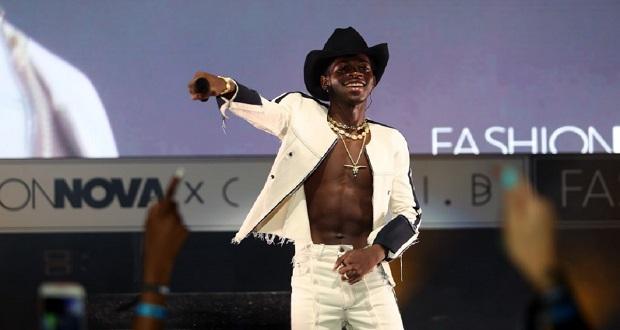“You’re working against years and years of disenfranchisement, so you need to think in terms of this is what we can offer as far as training, here is where we can give you support. It’s a journey and a relationship, not just a one-and-done transaction.”
— Donna Lennon, Deputy Director, Center for Law and Social Justice at Medgar Evers College CUNY
When I first entered the workforce, about 60 percent of women were employed, hitting an all-time high that peaked in 2000. Since that time that number has dipped, with a sharp decrease to 54 percent during the first month of the pandemic, which forced a disproportionate number of BIPOC women into unemployment. Between that and the Great Resignation, organizations are now being called to use a justice-centered lens in order to intentionally broaden their hiring practices so that they can attract and welcome talent from a wide range of sources.
With recruiting talent being a top concern among CEOs — according to the nonprofit business research group The Conference Board — and with multicultural populations being cited as “the growth engine of the future of the United States” by the market research firm Nielsen, applying a justice lens to your hiring will undoubtedly lead to a better organization. Equity is a win for all. Here, we look at three areas related to recruiting and hiring that can help increase diversity in the workplace despite these volatile, uncertain, complex, and ambiguous (VUCA) times.
Finding and Attracting Talent
Screening job descriptions using software from sites such as textio.com or Gender Decoder is just one of many ways to attract more diverse talent. Showcasing your organization’s values is yet another. For example, consider including the following requirements:
- Exhibits a flexible communication style and the ability to present to diverse communities
- Demonstrates an understanding of institutional racism and bias
- Has experience working on diverse teams and considers how work impacts multiple communities
- Approaches conflict with respect to the diverse perspectives of stakeholders and works with them to resolve differences
Now imagine seeing these criteria from the point of view of a job seeker from a historically marginalized group. Would you be more inclined to apply for a position if the points listed above were part of the job description? Would you place more trust in an organization that lifted up these values?
Being explicit in your job ads about encouraging people from protected classes to apply can also help with casting a wider net. Below is an example from the healthcare company GoodRx:
“… research shows that women and other underrepresented groups apply only if they meet 100% of the criteria. GoodRx is committed to leveling the playing field, and we encourage women, people of color, those in the LGBTQ+ communities, and Veterans to apply for positions even if they don’t necessarily check every box outlined in the job description. Please still get in touch — we’d love to connect and see if you could be good for the role!”
The U.S. Equal Employment Opportunity Commission specifically protects against workplace discrimination based on race, color, religion, sex (including pregnancy and sexual orientation), national origin, age, disability, and genetic information such as family medical history. In addition to that list, workplace hiring policies may proactively expand protections to cover other factors that disproportionately affect candidates of color, including:
- Arrest or conviction records: Black Americans are arrested at nearly five times the rate of whites, according to the nonprofit The Sentencing Project, and they account for more than 51 percent of defendants who are wrongfully convicted and later exonerated per The National Registry of Exonerations. Meanwhile, research from the American Civil Liberties Union shows that formerly incarcerated job seekers demonstrate higher loyalty to employers and lower turnover rates. This in turn reduces overall training and recruitment costs, making the “ban the box” movement to remove criminal history questions from employment applications a win across the board.
- Credit history: Generations of discrimination in employment as well as the fallout from past racist economic policies that still persist such as redlining (whereby a disproportionate number of Black people were denied mortgages due to where they live) have made access to credit-building home ownership more difficult and put Black folks at a higher risk for predatory lending practices that result in more debt and essentially penalize hardship. “Employers need to think about the relevance of the questions they are asking,” says Donna Lennon, Deputy Director at the Center for Law and Social Justice at Medgar Evers College CUNY. “Why do you need information on credit history? Do you need to have this and does it tell you anything about the strength of an applicant and how they’ll do in the role you need to fill?”
- Drug testing: Research from Yale School of Medicine found that 63 percent of Black employees work for organizations that perform drug testing, while the same is true for only 46 percent of white workers. That disparity matters, especially given that African Americans who test positive report being fired or reprimanded at twice the rate of white employees who also test positive, according to survey results from the American Addiction Centers’ Detox.net. Today, thousands of companies including Amazon have pledged to relax or do away with drug screening policies in order to attract talent.
- Unemployment status: The unemployment rate of Black people is more than double that of white people, according to research from the Economic Policy Institute, a nonprofit think tank. Adding to this, 70 percent of employers link unemployment status with poor productivity, adding yet another bias against hiring unemployed Black workers who already face longer lag times between jobs than unemployed white workers. To combat this phenomenon — known as “last hired, first fired,” according to the Center for American Progress — ensure your hiring team is aware of unemployment bias and its disproportionate impact on Black job seekers.
Employers link unemployment status with poor productivity, adding yet another bias. Ensure your hiring team is aware of unemployment bias and its disproportionate impact on Black job seekers. Click To Tweet
In addition to rethinking what goes into your job ads, where you post your openings also has an influence on making progress toward racial justice. Reaching out to Historically Black Colleges and Universities (HBCUs) and Tribal Colleges and Universities (TCUs), as well as two-year community colleges, where students of color and first-generation students report a greater sense of belonging than at four-year universities, provides alternatives to the typical top colleges and Ivy League institutions that most organizations look for when seeking to fill entry level and executive roles. Hiring for a remote position? Consider advertising on online job boards targeted to job seekers in the southern United States, where nearly 60 percent of the Black labor force lives, according to research from McKinsey & Company.
Hiring for a remote position? Consider advertising on online job boards targeted to job seekers in the southern United States, where nearly 60 percent of the Black labor force lives. Click To Tweet
Standardizing Your Interview Process
Unconscious bias can result in favoring candidates based on highly subjective factors, such as likeability or the fact that the person being interviewed reminds the hiring manager of themselves. With nearly one-third of new hires quitting within the first six months according to survey data from BambooHR, going with one’s gut clearly isn’t the answer when it comes to sustainable staffing. In order to make better hires and achieve equity in the workplace, consider standardizing your interview process so that more candidates have the opportunity to prove themselves outside of just first impressions.
To start, hiring managers should be made aware of their own biases through training or using online assessment tools, such as the ones provided by the nonprofit organization Project Implicit, to help them see instances where preferences might cloud judgment. Next, come up with a standard list of questions that all candidates must answer in the same order. This will help keep the focus on skills and knowledge needed to do the job and establish a consistent baseline among the candidates.
Additionally, you may want to ask questions that elicit the interviewee’s commitment to promoting diversity, equity, inclusion, and justice. For example:
- What kinds of experiences have you had in relating to people whose backgrounds differ from your own? What did you learn from these experiences?
- What is your understanding of diversity, equity, inclusion, and justice? Why do you think they’re important to this position?
- What actions have you taken to further your knowledge about diversity, equity, inclusion, and justice? How has your thinking about DEIJ-related issues changed over time?
- Discuss a time when you demonstrated a commitment to equity in your work. How would you do that here?
- What challenges do you anticipate when working with diverse populations? How do you plan to address them?
- How would you handle a situation in which a colleague made a racist, sexist, or otherwise prejudiced remark?
If possible, have multiple people including colleagues of color and members from your employee resources groups (ERGs) sit in on the discussion or have them meet with the interviewees individually to go over the same questions so that you have input from a variety of perspectives. Administering a short work sample test is another equitable way to assess candidates based on their relevant skills rather than their personalities or connections.
Ensuring Fair Compensation
As one of the final steps in the hiring process, negotiating compensation is another area where racial inequity thrives. According to research published by the American Psychological Association, Black job candidates are more likely to be offered lower salaries even when they negotiate the terms. In fact, they are penalized and offered less than their white counterparts when they ask for more than the person negotiating with them believes they deserve due to racial bias. These consequences are dire and compound over time: According to Pew Research Center, college-educated Black men earn 20 percent less than college-educated white men, with college-educated Black women earning around 30 percent less. Women in general have long faced a backlash when it comes to taking the initiative to negotiate higher pay due to deeply ingrained sexist views of women as being passive and accommodating. This has resulted in the perception that women who assert themselves are less likeable and less likely to be promoted, according to research from Harvard Kennedy School.
Black job candidates are more likely to be offered lower salaries even when they negotiate. They are penalized and offered less than white counterparts when they ask for more than the person hiring them believes they deserve. Click To TweetThis is why pay equity — compensating employees the same amount for executing the same or similar work — must be part of any plan to reimagine HR with a justice lens. Typically, this involves conducting a pay audit to help you understand where and how big the gaps are among different employees or groups of employees. Using that data, your organization can then begin forming a strategy and timeline for addressing inequities, including determining the root causes and whether pay bumps are warranted. Insight from the audit can also help with developing policies with an equity lens, such as uniform starting pay, promotion increases, and incentives. Transparency around these efforts can go a long way toward building trust — and are sure to be a big draw when advertised as part of your justice-centered recruiting and hiring campaigns.
Pay equity — compensating employees the same amount for executing the same or similar work — must be part of any plan to reimagine HR with a justice lens. Typically, this involves conducting a pay audit. Click To Tweet



















